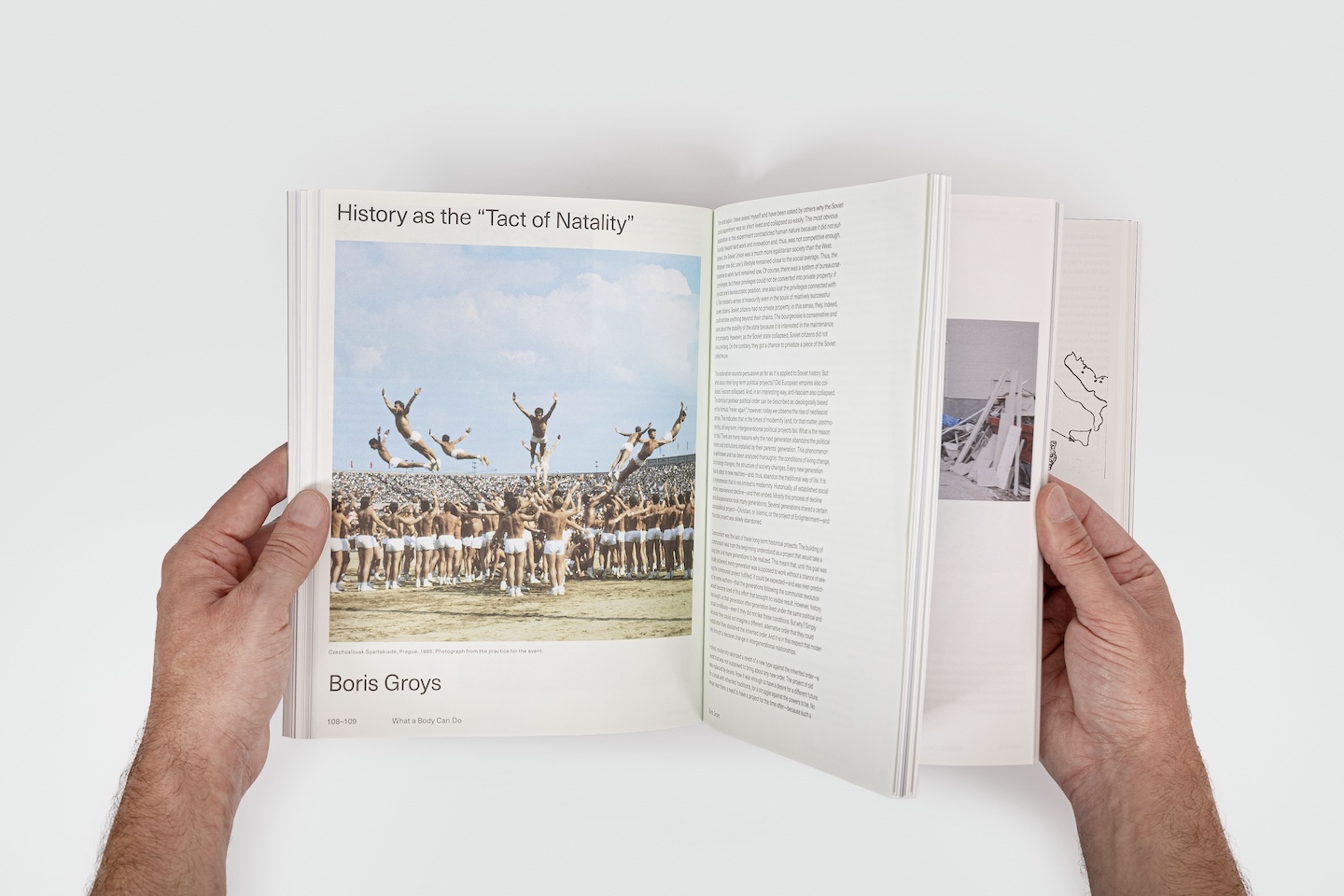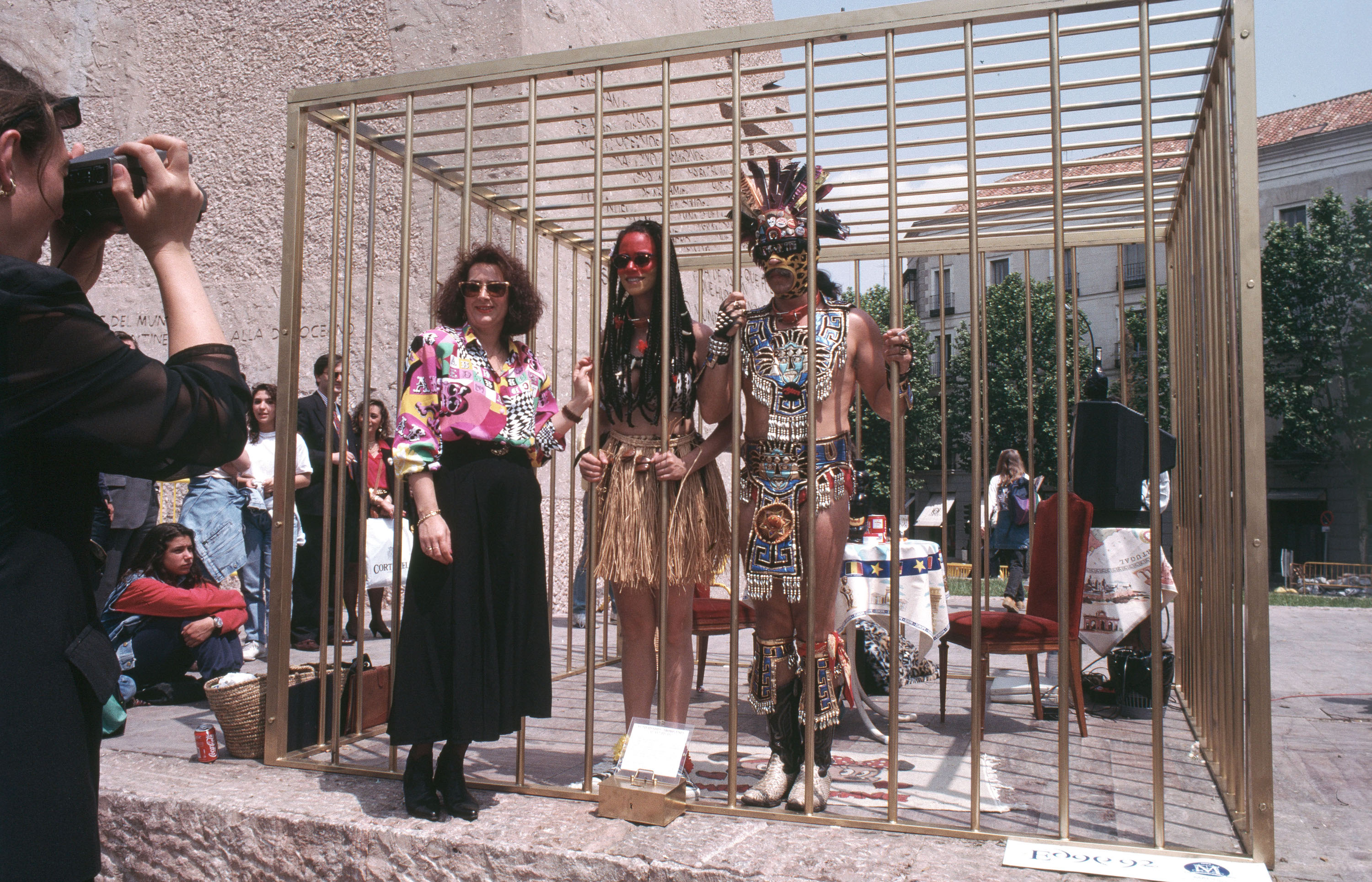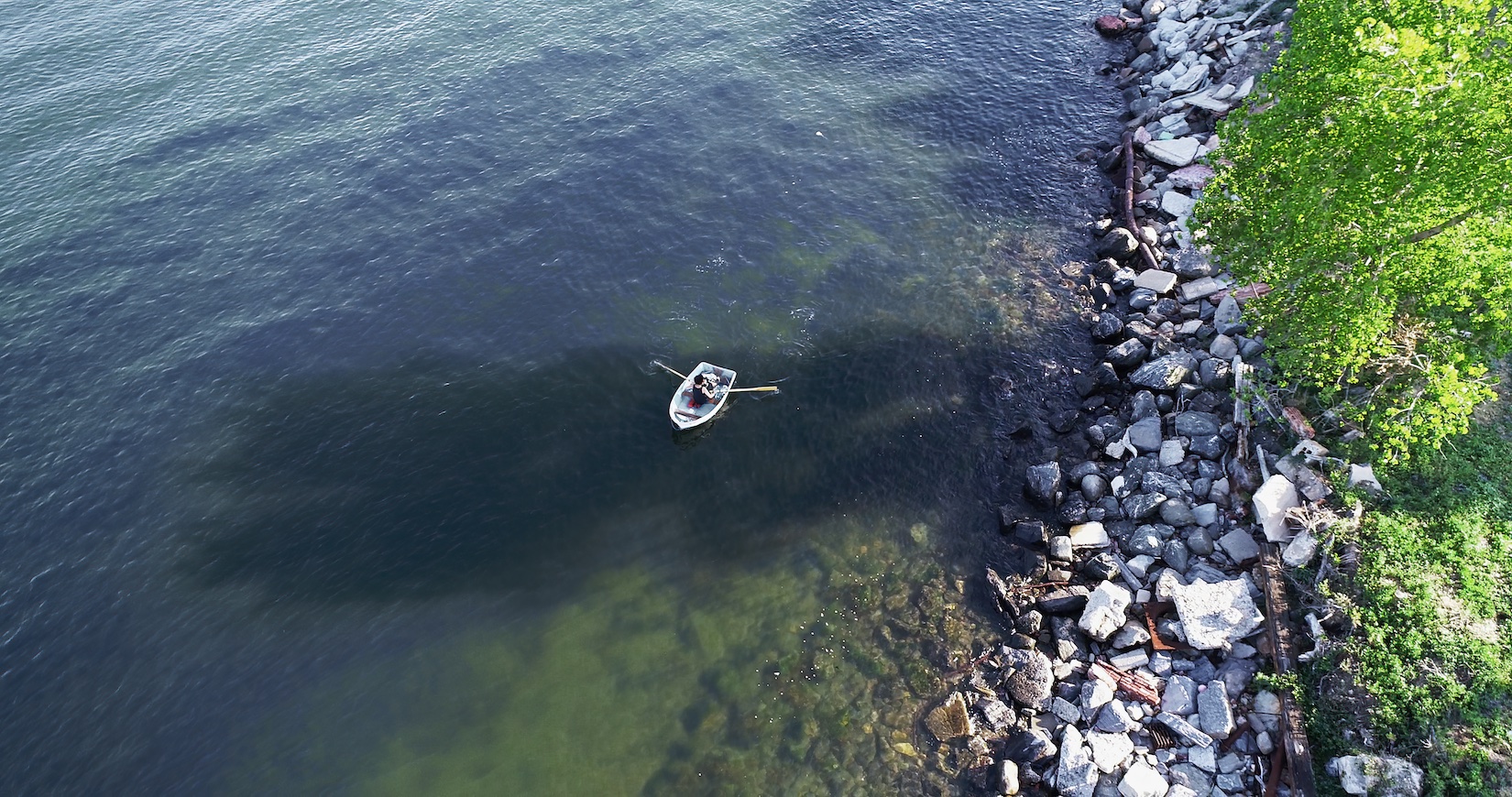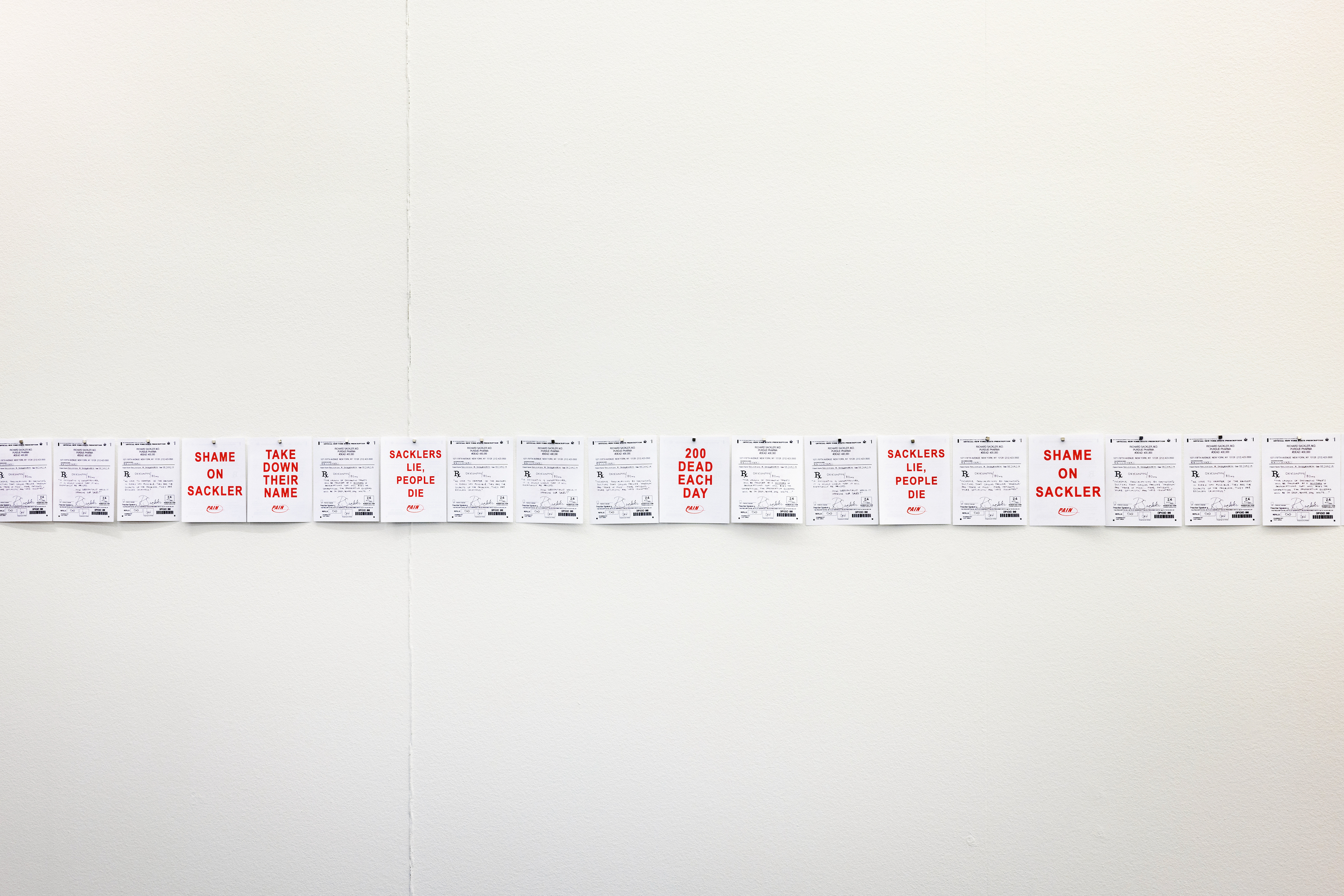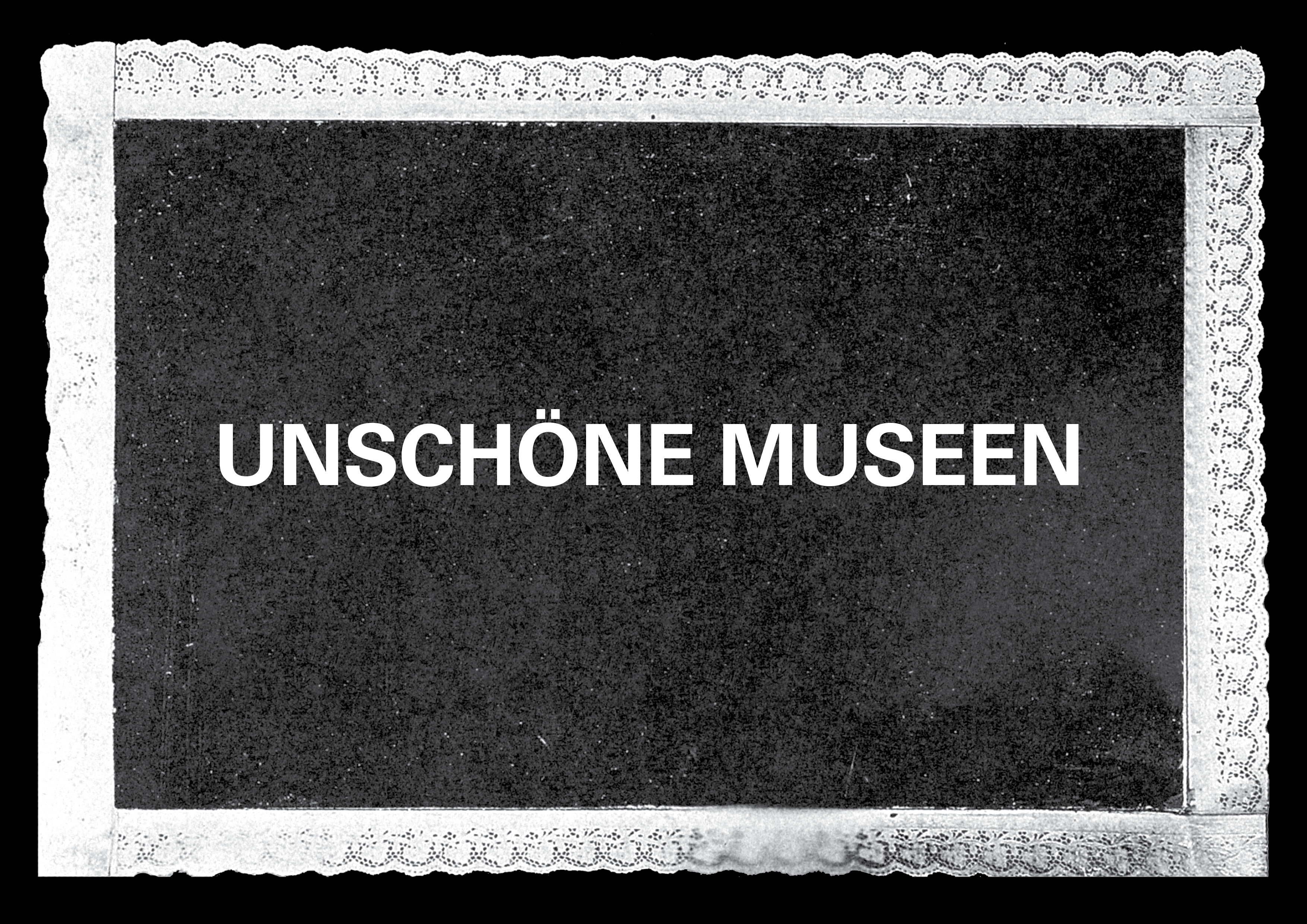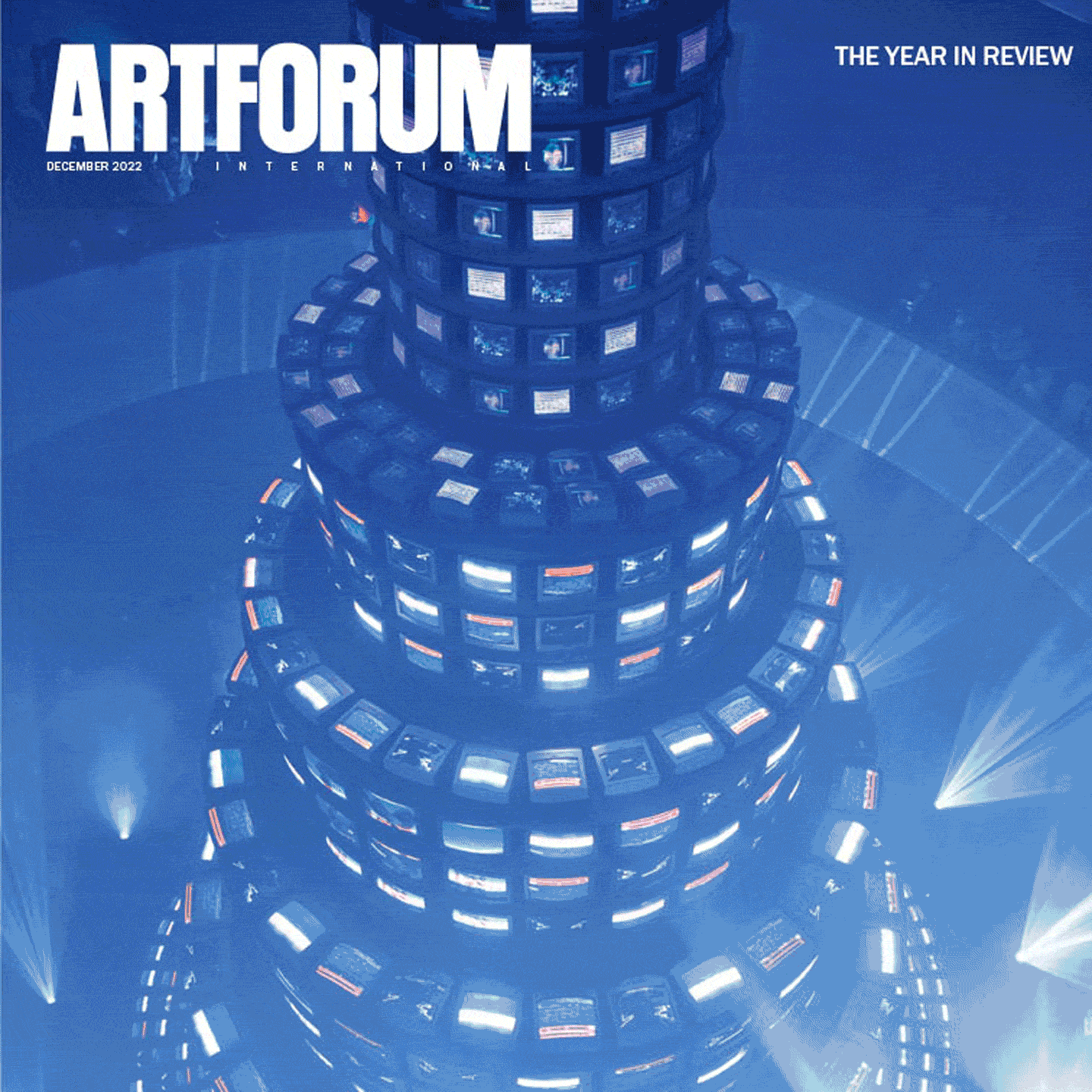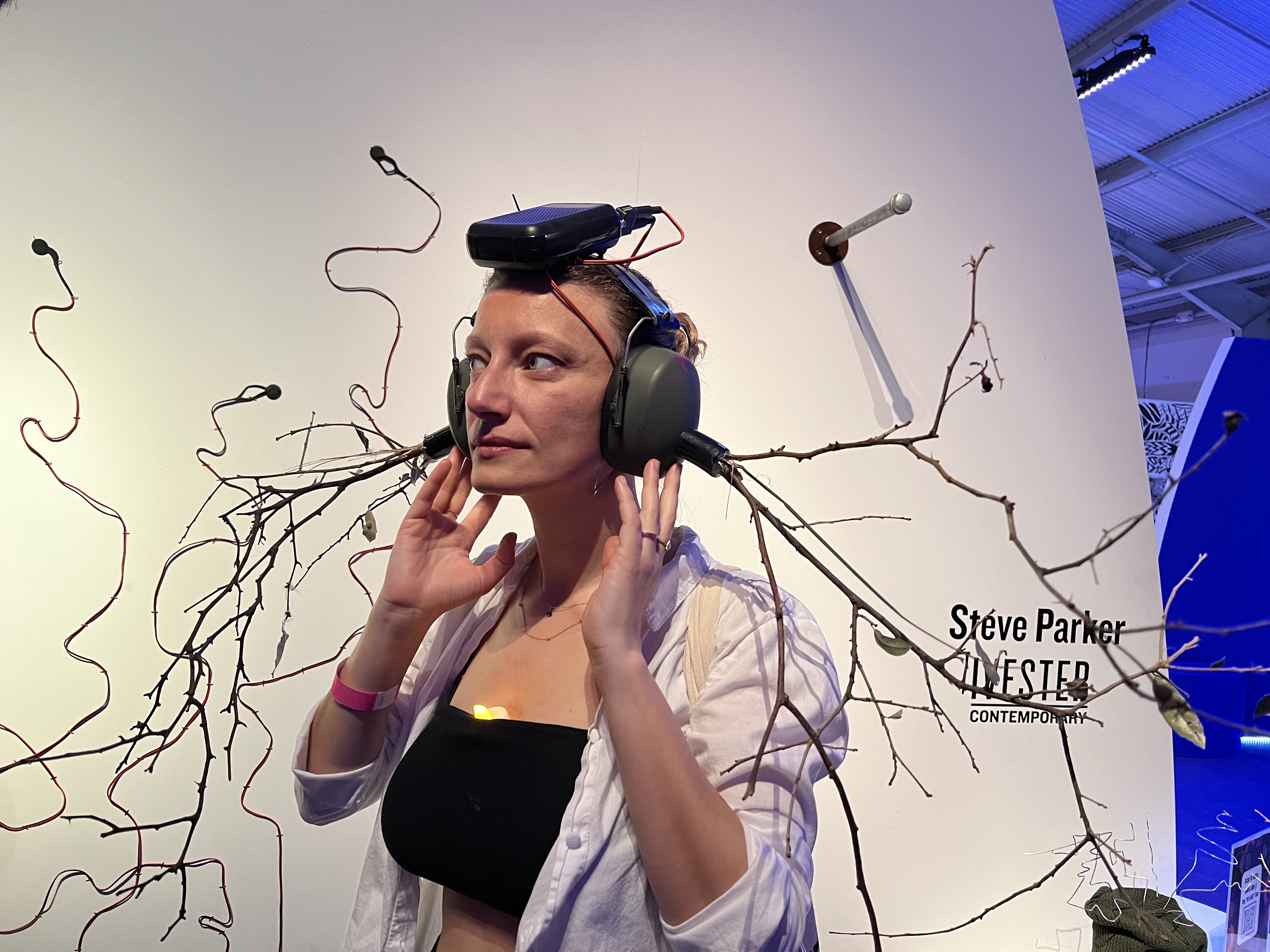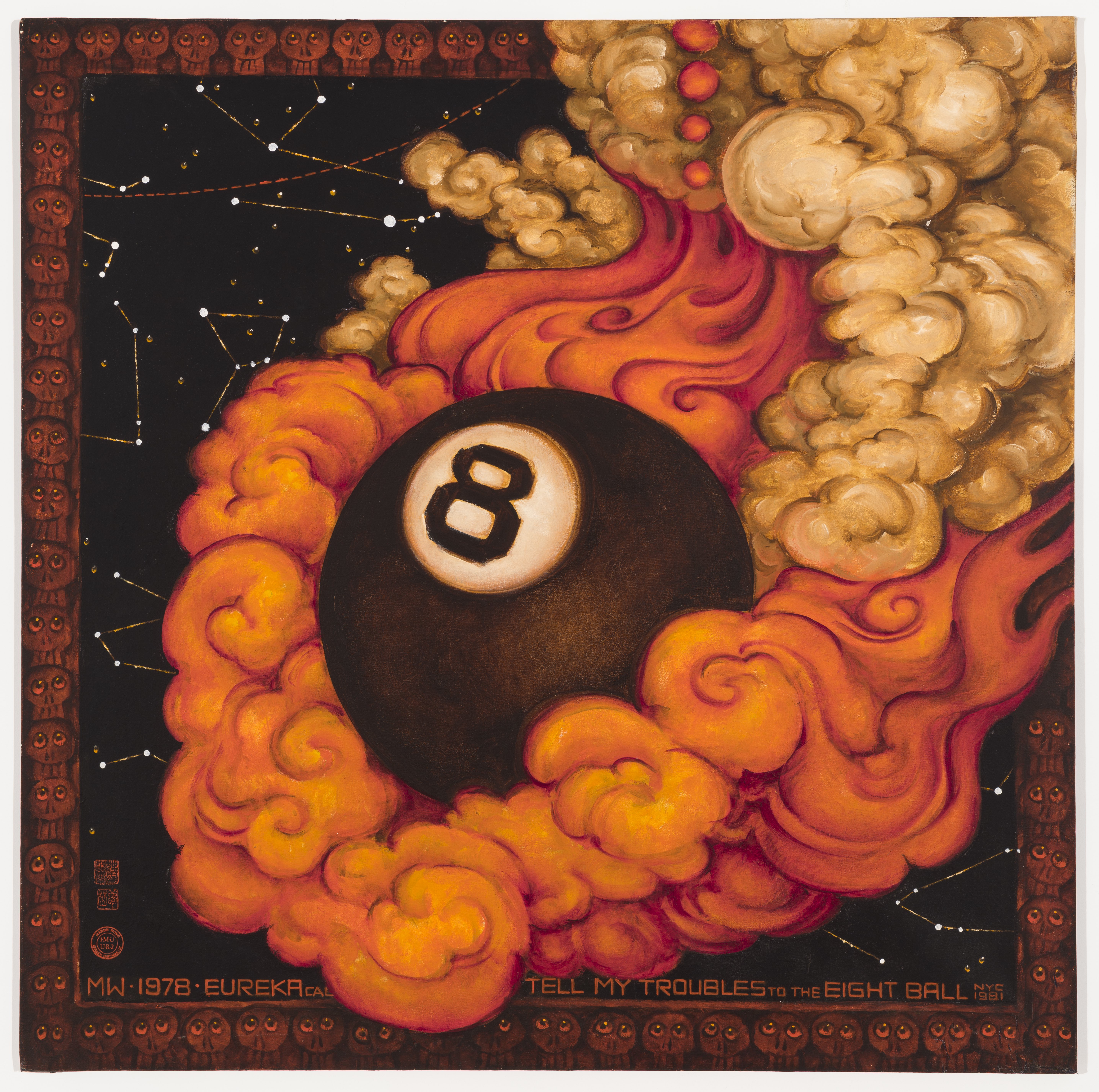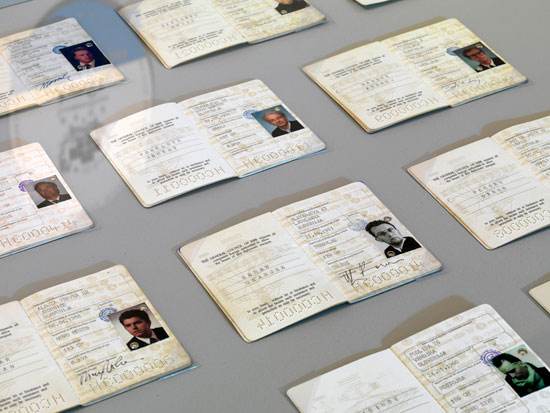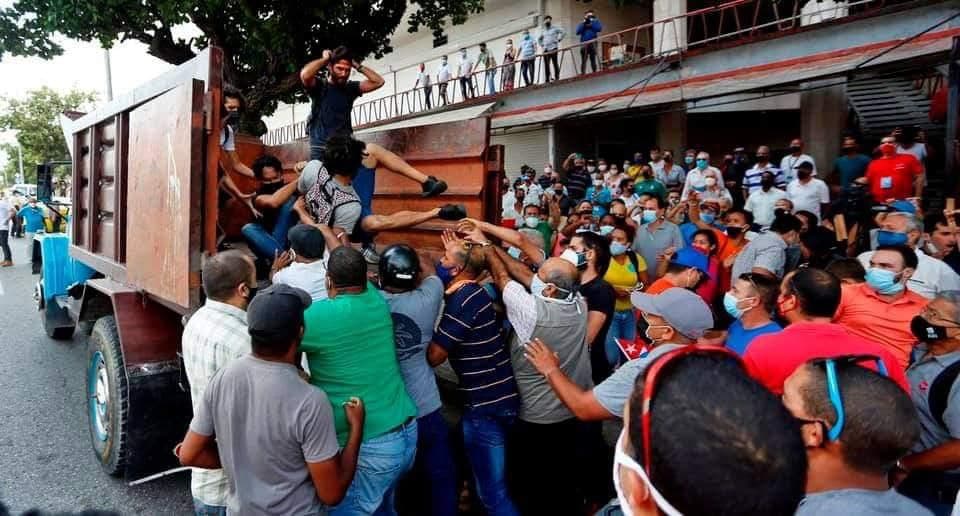
Plainclothes State Security agents throw artists into a truck, Havana, July 2021. The artists were taken to a holding cell in a police station. Photo: Leonardo Fernandez.
July 11, 2022 marks the one-year anniversary of the largest mass protest in Cuba since the beginning of the revolution in 1959—referred to among Cubans as “11J.” Last summer, tens of thousands of young and largely Black Cubans took to the streets, chanting “Freedom!” and “Patria y vida,” the title of a Grammy-winning song that has become an opposition anthem.1 Although the authorities tried to argue that the protests were planned by artists acting as agent provocateurs and that they were carried out by “delinquents,” it was Yoan de la Cruz’s Facebook Live video stream of a small demonstration against prolonged blackouts in a provincial town that sparked copycat marches in some fifty cities and towns across the island.2 For posting that video, the twenty-seven-year-old self-employed street vendor received a six-year prison sentence, which was subsequently changed to five years of house arrest.
The grassroots origins of the protest have not stopped Cuban authorities from targeting politically minded artists for punishment: Luis Manuel Otero Alcántara, cofounder of the artivist San Isidro Group, was arrested on his way to the protest and was recently sentenced to five years in prison. Rapper Maykel “Osorbo” Castillo, cowriter of “Patria y Vida,” was arrested two months prior and was just given a nine-year sentence after languishing for more than a year in prison. Visual artist Hamlet Lavastida spent a year in Europe before the protests but was nonetheless accused of having planned them and was arrested upon his return to Cuba. After three months in a jail at State Security headquarters last summer, Lavastida was expelled from the country. Anyelo Troya, the cameraman who filmed segments of the “Patria y Vida” music video, was also arrested during the protests, as was music student Abel Lescay, both of whom are now under house arrest. Seven members of the 27N artivist group were detained for trying to enter the offices of Cuban National Television on July 11, and subsequently released. Several other 27N and San Isidro Movement members have been subject to house arrest, forced into exile, or refused entry to the island. Since the emergence of the San Isidro Group in 2018 as protagonists of a rebellion against the Cuban state’s attempts to curb autonomous cultural activity and in support of expanded civil rights, the Ministry of the Interior has deployed a variety of means to intimidate, harass, demonize, and ultimately suppress them. 11J has served as the ultimate pretext for locking them up.
Even though many of the 11J protesters chanted the song “Patria y Vida” as they marched, it is unlikely that they even knew who all the artivists in Cuba are. The 11J protesters were exasperated by police repression, constant power outages, and food shortages—all of which are related to Cuba’s ongoing economic freefall, brought on by the disappearance of tourism during the pandemic, declining support from the country’s principal ally, Venezuela, and tightened embargo restrictions from the Trump years. The protesters were also shocked by the contrast between the much-lauded success of the country’s medical missions dispatched to treat pandemic victims in Europe, and the ghastly photos of dead Cubans lying in streets and in decrepit hospitals, signs of the collapse of the public health system during the Covid-19 outbreak. For Cubans around the world who have yearned for political change after sixty-three years of “revolution,” the uprising constituted a long-awaited public expression of discontent in a country where protests and opposition political parties are banned, and criticism of the state is punishable by fines or imprisonment. The collective outcry from “los cubanos de a pie” (everyday Cubans) makes it far more difficult to argue, as Cuban authorities and their supporters have done for decades, that opponents of the political system are an insignificant minority on the island and that they are manipulated by extremist exiles or foreign governments. So does the fact that more than 140,000 Cubans have journeyed under treacherous circumstances to the US-Mexico border since October 2021, citing unlivable conditions and ongoing police repression as their causes for demanding asylum. That is the largest mass migration of Cubans in decades.
The 11J protests did not bring about a desirable change in government policy or practice; in keeping with similar responses from authoritarian regimes in Latin America, Eastern Europe, and Asia, the Cuban state lashed out against the protesters with police beatings, detentions, and a media campaign to discredit them. Cuba’s Ministry of the Interior used photos from the international press to identify and arrest people after the two days of unrest. An attempt last November to carry out a nation-wide march in support of political prisoners was squelched and its leader, the dramatist Yunior Garcia, was forced out the country. The NGO Cubalex3 has documented 1484 arrests related to the protests, including several minors. Seven hundred and one political prisoners remain in detention, and 180 are under house arrest awaiting trial. Six hundred and twenty-two have been tried, mostly via summary judgements carried out without giving those accused sufficient time to prepare defense or consult lawyers.4 Thus far, sentences have ranged from five years of house arrest or forced labor to twenty-five years of imprisonment for “sedition.” The government has also implemented new laws against criticism of the state on social media and also against the use of foreign funds of any kind for activities deemed disruptive of “constitutional order.” Since the Cuban constitution stipulates that its version of socialism is “irrevocable,” any suggestion of a political alternative could be treated as disruptive.5 These new laws follow the implementation of Decree 349 in 2018, which criminalized independent cultural activities carried out without state authorization, and a 2019 decree that imposed penalties for “improper use of national symbols.”6 That last dictate was used against artist Luis Manuel Otero Alcántara for his Drapeau performance in which he wore a large Cuban flag day and night, in public and private, to dramatically assert that “the flag belongs to all Cubans.”
The Cuban state’s repressive response to mass protest has dissuaded many of its citizens from attempting to retake the streets, but it has also galvanized families of the detainees to publicly denounce the harsh treatment of their relatives and share information amongst themselves. This politicization of the citizenry breaks with the Cuban norm of keeping one’s mouth shut in the hope of leniency from an authoritarian state in exchange for passivity. The response of families, of enraged mothers in particular, has prompted Cuban activists to support them by collecting and organizing data on detentions, police violence, and sentencing. The 11J databases are far more comprehensive than any information made public by the state and are frequently cited by international press. Activists and independent journalists are also outing State Security agents and naming judges who would otherwise enjoy anonymity, since trials are neither public nor televised. Dovetailing with these efforts was the boycott carried out by Cuban arts professionals last fall against the 14th Havana Biennial, which succeeded in getting a dozen foreign artists and critics to withdraw from the event and hundreds more to endorse their refusal to participate. By redirecting international press attention away from the art shows and towards Cuba’s censorship of artists and its human rights violations, the boycott undermined the government’s longstanding efforts to enhance its international image as a beneficent arts promoter and to profit from cultural tourism. This effort was followed by an unexpected ad hoc campaign against the San Remo Music Awards that were slated to take place in Cuba last spring, which resulted in the withdrawal of several prominent pop music singers seeking to distance themselves from the regime.7
These citizen-based efforts put the Cuban government on the defensive, forcing it to attempt to rationalize its abuses through vitriolic public statements. Those arguments are swiftly refuted by independent journalists and Cuban citizens who have become adept at using social media to circumvent censorship in state press outlets, air their grievances, and establish ties with sympathizers locally and globally, thereby eroding the state’s hegemonic control over information and association. Citizen-based efforts have also catalyzed responses by international human rights groups such as Amnesty International and Human Rights Watch, pressuring the United Nations and the European Parliament to sanction the Cuban government for its violations of human rights. Although the United Nations routinely condemns the US embargo against Cuba by annual majority vote of its members, several subcommittees have issued formal complaints about the Cuban state’s response to the protests, as has the European Parliament. However, condemnatory rhetoric is not equitable with action, and European governments, particularly those that have significant trade agreements with the island nation, have been reluctant to sanction Cuba due in large part to the near universal disapproval of the US trade embargo. Despite the purported influence of conservative Cuban exiles in Florida and Washington, the US State Department’s frequent tweets condemning repression in Cuba have little effect and are easily read as little more than pandering to Cuban-American voters. The lack of dialogue between Cuban leaders and the Biden Administration, along with the international community’s disapproval of the embargo, further diminish the US’s position in relation to Cuban affairs. Nonetheless, the recent statement from Gabriel Boric, Chile’s new president, that Cuba’s human rights abuses are unacceptable suggests that the decades of silence on the subject from the Latin American left may be coming to an end.8
That legacy of silence from the left regarding repression in Cuba is not specific to Latin America; it is global and rooted in Cold War antagonisms. During that era, leftists argued that the international human rights community was biased in favor of victims of repression in socialist countries and created a significant archive of information about oppressive right-wing military regimes. In light of the proliferation of new authoritarisms and the fortification of old ones in the current geopolitical landscape, it is time to reconsider whether concern for human rights abuses at one end of the political spectrum must continue to foreclose consideration of the excesses of the other. Argentine political scientist Claudia Hilb has noted that many Latin American leftists feel indebted to the Cuban government for harboring them during the military dictatorships of the 1970s and have thus been reluctant to speak out.9 Cuban dissidents have complained for decades that fellow travelers’ unquestioning admiration for Fidel Castro and their psychic investment in the idea of a tropical socialist utopia have blinded them to the harsh realities of Cuban life. Cuban activists on the island allege that foreign correspondents based there cooperate with government interests and downplay or ignore repression in order to remain in the good graces of the authorities; over the years, several foreign journalists have been expelled or had their press credentials revoked for fraternizing with dissidents.10 That silence frustrates a young generation of Cubans who grew up in the postcommunist era, embrace democratic values, and eschew the violent tactics of exiled extremists—but have few options for international support other than conservative political entities and US State Department–funded NGOs. Progressives are quick to jump on those alliances, without noting that their own organizations shy away from engagement with Cuban human rights activists. They do not compare that support with the funding from European governments and private foundations funneled to progressive journalists and economic, cultural, and ecological projects in the rest of the Global South. Nor do they acknowledge that the Cuban diaspora sends at least a hundred times more money to islanders—as much as $2–3 billion annually—than the funding made available from US government–supported sources.11
For six decades, progressives have adhered to the Cuban government line that all its problems stem from the US trade embargo, have viewed all criticism of Cuban repression as suspect or irrelevant, and have derided a politically diverse, geographically dispersed, and multigenerational Cuban diaspora as “the Miami mafia.” That inaccurate and dismissive stereotyping denies Cuban people political agency, tacitly endorses the conflation of Cuban state interests with those of the population, and serves as a convenient means for foreign progressives to entrench themselves as the sole legitimate spokespeople for Cuba’s interests. Although it is refreshing to see that Documenta 15 has granted an important platform to Tania Bruguera’s INSTAR, which is currently introducing audiences in Europe to the history of censorship and repression in Cuba over the past six decades, a clearly discernable reticence with regard to criticizing Cuba’s domestic affairs persists in the arts, academia, and progressive media. The prevailing perception of the Cuban revolution’s legitimacy and infallibility is sustained by the silencing and discrediting of its critics, and that silence is a by-product of Cuba’s enormous diplomatic presence and its sophisticated intelligence operations.
Although Cuba is a small country with a population of eleven million, it maintains 126 embassies and twenty consulates, and its permanent mission to the UN boasts forty-three diplomats.12 Other countries of comparable size and population maintain far fewer embassies with smaller staffs: Austria, for example, only has eighty-five embassies, while Honduras and the Dominican Republic have thirty-two and forty-eight respectively. Cuba maintains embassies at and sends doctors to every small island nation in the Caribbean and the Pacific, and these nations respond in turn with supportive votes at the United Nations. One of the main objectives of Cuba’s embassies is to provide marching orders to a vast web of solidarity networks that promote positive images of the revolution. On more than one occasion in New York, I have witnessed Cuba solidarity groups in their attempts to interrupt protests and shut down public presentations by Cuban dissidents. At a demonstration in front of the Cuban Mission to the UN last November, it emerged in interviews conducted by Cuban journalists that none of the Cuba supporters were Cuban nor had they lived on the island.
Coverage of the 11J protests in progressive media in the past year has characterized them as a response to the US trade embargo, omitting the fact that the crowds were screaming for freedom and that police cars and government offices were targeted. Last spring, when hundreds of members of the Latin American Studies Association requested that the organization, which promotes exchange with Cuban universities and researchers, issue a public statement against the escalating repression of Cuban artists and intellectuals, the leadership of the association published a denunciation of the embargo instead.13 In the wake of the 11J protests, Black Lives Matter praised Cuba for its “solidarity with oppressed peoples of African descent” and called for an end to the embargo, completely overlooking that Black Cuban artists were in prison, and that a Black presence had dominated the protests.14 Immediately after the protests, the People’s Forum, a New York–based nonprofit that describes itself as an “incubator for working class and marginalized communities”15 and that is also is a recipient of grants from Goldman Sachs’s Philanthropy Fund,16 orchestrated the publication of a full-page ad in the New York Times signed by four hundred progressive intellectuals and activists from the US and Cuba calling for an end to the embargo, and casting the protests as a response to embargo-derived food and power shortages.17 Left-wing media outlet Democracy Now! continues to restrict its coverage of Cuba to interviews with state officials, ignoring the point of view of their opponents. The Intercept blamed the embargo for the protest and suggested that the US was using the protests to prepare for a coup,18 while progressive publications such as The Nation focus entirely on the negative impact of the US trade embargo. There is nothing wrong with analyzing US policy toward a foreign country, but reducing that country’s political situation to its relationship with the United States and refusing to engage with that country’s opposition creates the impression that Cuba has no political reality other than its connection with a foreign power, which is a deeply flawed and paternalist view.
There is a peculiar and, for me—as a Cuban-American woman of color—painful irony in the fact that prominent African-American activists and politicians who openly support the Cuban government have chosen to turn a blind eye to the racialized oppression and other human rights violations that they fight so hard to expose in the United States. Angela Davis, who has advocated for the abolition of prisons and defended unjustly incarcerated Black men, argues against the embargo but says nothing about Cuba’s political prisoners, or about racial profiling there and the Black artivists currently in prison for their art. Neither does California congresswoman Karen Bass, who joined the Venceremos Brigade and worked construction in Cuba in the 1970s, and who spearheads congressional initiatives to end the embargo. (Bass does, however, speak out against the mistreatment of African refugees fleeing to Europe.) Actor and civil rights activist Danny Glover, a frequent guest of the Cuban government and recipient of the Cuban National Medal of Friendship, has never engaged publicly in dialogue with anti-racist activists and scholars in Cuba such as Roberto Zurbano, a frequent commentator on the marginalization of Black people on the island.19 Black Lives Matter has been publicly taken to task by Cubans for its refusal to express solidarity with Black civil rights activists in Cuba, but has refused to acknowledge those critiques. They all seem to choose to ignore the work of prominent scholars such as Alejandro de la Fuente, who has demonstrated that despite economic and social gains made by Black Cubans in the first decades of the revolution, the dependence on remittances and tourism that defines the country’s postcommunist period has intensified the immiseration and marginalization of Cuba’s Black population.20 Leaders of independent activist organizations such as Code Pink and Pastors for Peace champion “la revolución” but never acknowledge that the Cuban government does not permit independent civic organizations to operate and criminalizes the kinds of demonstrations of which Code Pink director Medea Benjamin is an infamous protagonist. Pastors for Peace sends a caravan of donations to Cuba each year but does not acknowledge the criminalization of religion that lasted for decades on the island and the incarceration of thousands of evangelicals in forced labor camps. The absence of any expression of concern for their counterparts in Cuba reproduces the attitude of the Cuban government, which refuses to recognize the legitimacy of its critics or the substance of their complaints. It is a sad state of affairs when human rights are only applied to one’s friends.
It is not as if Cubans outside the government were not aware of the US trade embargo—because the state invokes it as the explanation for every deficiency or shortage they experience. It may come as a surprise to progressives outside of Cuba, but many opponents of the regime are outspoken about their support for a termination of the embargo precisely because of this. Their reasoning is not based in morality; rather, it is a matter of political pragmatism. They see the embargo as a failed policy, as do I, because it has not achieved its intended goal of destroying the Cuban revolution. It has instead provided the Cuban government with a smokescreen that hides the corruption, dysfunction, and inefficiencies of the state, its repressive policing, its political manipulation of the judiciary, its use of forced labor, Fidel Castro’s wildly impractical economic schemes from the early years, and the current business ventures of the Cuban military, which are centered on tourism development at the expense of the basic needs of the citizenry. The embargo has enabled Cuba to characterize itself as a victim of US aggression, provoking other countries to rally around the “revolution.” It bears noting that Cuba’s most ardent supporters invariably refer to the trade embargo incorrectly as a “blockade,” which suggest that the country is completely sealed off economically and even militarily. In reality, the US is Cuba’s fifth largest trading partner, and the island trades with dozens of other countries.21
Cuba’s intransigent supporters may be unwilling or unable to think beyond a paradigm that reduces that country’s political life to its relationship to the United States. But Cuban historian Rafael Rojas has argued that the country’s recent wave of unrest could be better understood by comparing it to many other conflicts that have emerged in Latin America in recent years, in countries such as Chile, Ecuador, and Mexico. Rojas sees these conflicts as intergenerational, as expressive of changing political attitudes within progressive political movements. Younger generations are less attracted to grand narratives about revolutions and imperialism and are more focused on identity politics, gender equality, ecological concerns, anti-racism, and social justice achieved through political processes. Cuba’s young people are confronting a largely octogenarian leadership that cannot accept that it has lost control of the hearts and minds of its children, grandchildren, and great-grandchildren, and that the world it sought to build imploded long ago. Repression is all they have left.
See →.
Michael K. Lavers, “Gay Man Who Livestreamed Cuba Anti-government Protest Released from Prison,” Los Angeles Blade, May 7, 2022 →.
See →.
See →.
Ed Augustin, “Cuba Overwhelmingly Approves New Constitution Affirming ‘Irrevocable’ Socialism,” The Guardian, February 25, 2019 →.
“Arranca el Boicoteado San Remo Cuba y Por Fin sus Organizadores Destapan a los Extranjeros Invitados,” DDC, April 5, 2022 →.
“Gabriel Boric: ‘En Cuba Hay Presos por Pensar Distinto y Eso es Inaceptable,” Infobae, June 9, 2022 →.
Claudia Hilb, Silencio, Cuba: La Izquierda Democrática Frente al Regimen de la Revolución Cubana (Buenos Aires: EDHASA, 2000).
See →.
Daniel F. Runde, “U.S. Policy on Remittances to Cuba: What Are Some Viable Options?” Center for Strategic & International Studies, September 15, 2021 →.
“Cuba’s Disproportionate International Influence,” Archivo Cuba, 2022 →.
See Coco Fusco, “Whose Art Thrives in Cuba?” New York Review of Books, December 16, 2021 →.
Char Adams, “Black Lives Matter Faces Backlash for Statement on Cuba Protest,” NBC News, July 16, 2021 →.
See →.
See →.
See →.
Lucas Berti and Maurício Brum, “Manifestações, Prisões, Novas Sanções dos EUA: Afinal, o Que Acontence em Cuba?” (video), The Intercept Brasil, August 5, 2021 →.
Alejandro de la Fuente, “Race and Inequality in Cuba, 1899–1981,” Journal of Contemporary History 30, no. 1 (January 1995); A. de la Fuente, “The New Afro-Cuban Cultural Movement and the Debate on Race in Contemporary Cuba,” Journal of Latin American Studies 50, no. 4, special issue, “Cuba: 50 Years of Revolution” (November 2008).
See →.
